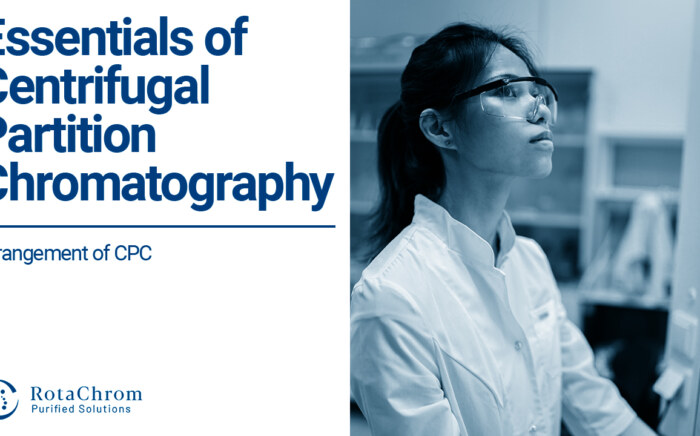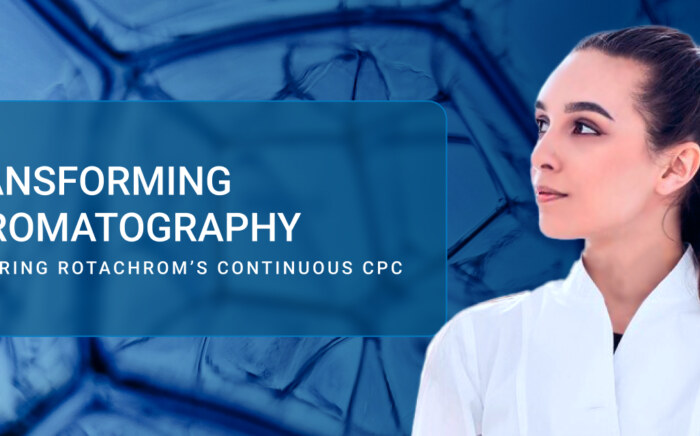Increasing separation efficiency by pH adjustment in Centrifugal Partition Chromatography
NewsAs a green alternative to traditional chromatographic methods, centrifugal partition chromatography (CPC) has a lot of potential to support sustainable chemical separations. In a previous blog post, we introduced CPC, its capabilities and how it supports a variety of solvents. In this second blog post in our series, let’s explore how CPC can cut costs and environmental impact through efficient solvent recycling.
Getting the Most Out of Solvent Systems
Sustainable separation processes reuse as much solvent material as possible, and CPC can benefit from solvent recycling through several processes like membrane filtration, ultrafiltration, dialysis and density-based recirculation. Here’s a rundown of the research done on each method:
Membrane filtration. It has been demonstrated that combining countercurrent chromatography with organic solvent nanofiltration (OSN) is a cost-effective purification method to isolate an active pharmaceutical ingredient (API) with a molecular weight of about 600 Da. They found that API rejection rates are dependent on the solvents used and even though they achieved more than 99% efficiency with their filter membranes, there is a need to develop membranes with 100% removal efficiency as their total API loss was 2.3% throughout the entire process. It was observed that using OSN to recycle the mobile phase solvent can provide 56% greater mass-intensity and highlights its value in optimizing CCC mass-efficiency.
Dialysis. It has been found that this recycling method shows potential to boost solvent use efficiency. In a CPC purification run with an aqueous two-phase system (ATPS), dialysis was used to isolate separated phenolic compounds and recycle the sodium polyacrylate and polyethylene glycol (PEG)-rich phases of the ATPS. They observed that when compared to CPC runs without dialysis, CPC runs with dialysis can reduce carbon footprint by as much as 36%.
Ultrafiltration. This method provides substantial solvent recovery results. Researchers modeled the continuous separation of PEGylated and non-PEGylated Cytochrome-C (Cyt-c) using CPC. Their results showed that through ultrafiltration, both the product and unreacted protein could be isolated with recovery rates of 88–100% and about 100% purity before recycling the PEG-rich ATPS with a consecutive purification run. Compared to processes without ultrafiltration, processes with ultrafiltration can reduce the carbon footprint by 67%.
Density-based recirculation. A method involving continuous in-line solvent recycling and density-measurement based ternary solvent system readjustment was recently investigated. In this method, pure solvents are automatically fed into a mixer-settler unit and the solvent system is prepared with the desired ratio based on density measurements. Here, the prepared phases are stored within buffer tanks. These tanks hold the phases until they’re ready to be pumped into the CPC during a chromatographic run.
After the run is done, waste solvents are separated from the impurities in the recycler skid and then both the recovered solvents and evaporated solvents from product fractions are fed back into the mixer-settler unit. After readjusting the solvent system based on density measurements, the phases are ready for another CPC cycle. Investigation results provided 14.865 kilograms of crude steroid API with an average purity of 98.74%. In this experiment, researchers ran 153 cycles and recovered more than 90% of the methyl isobutyl ketone (MIBK) and acetone content for recycling and reuse purposes.
To learn more about CPC, visit our technology page.
Want to get in touch?
Fill in the form below so our representatives can contact you. We will also let you in on more information on our technology.



